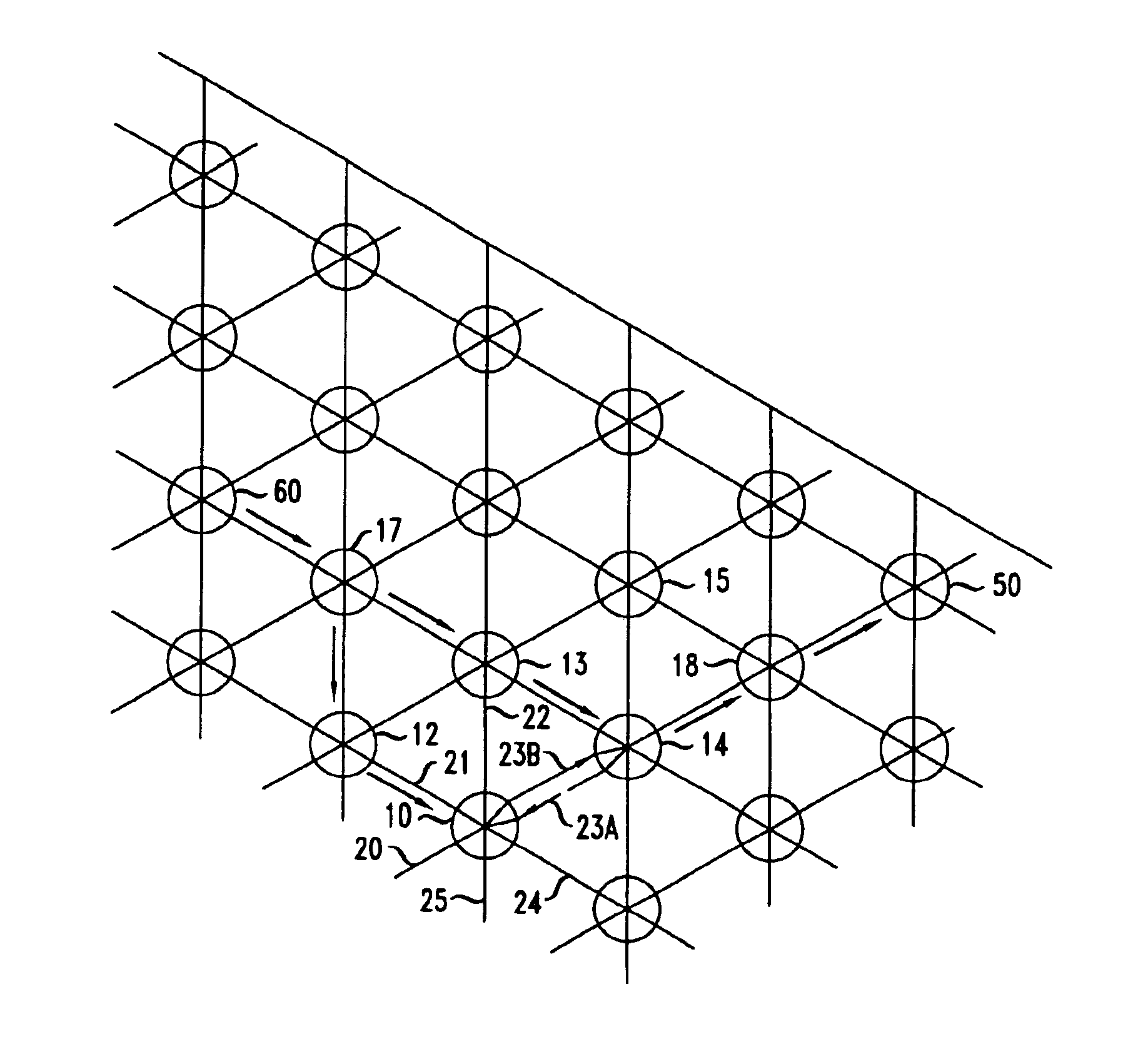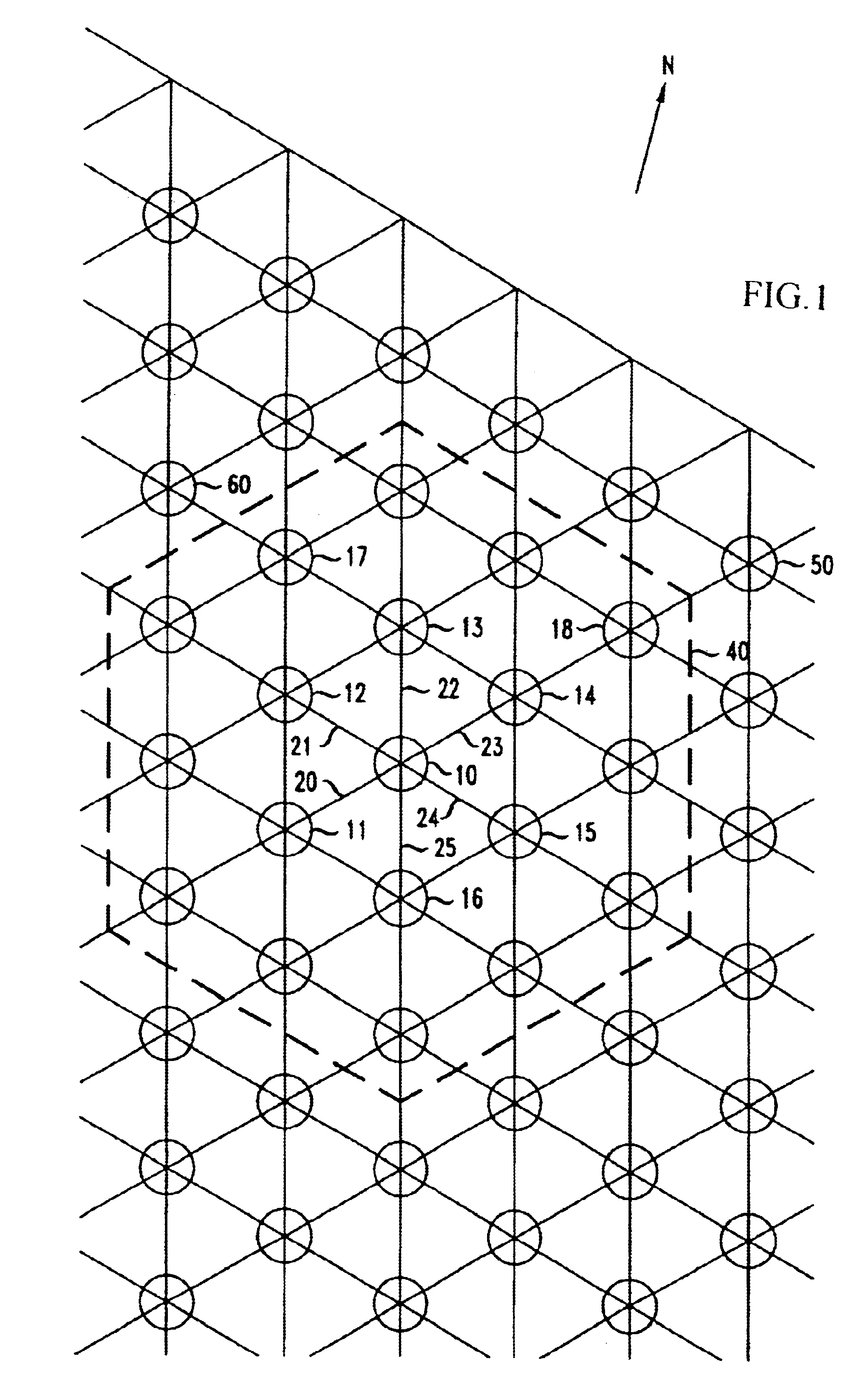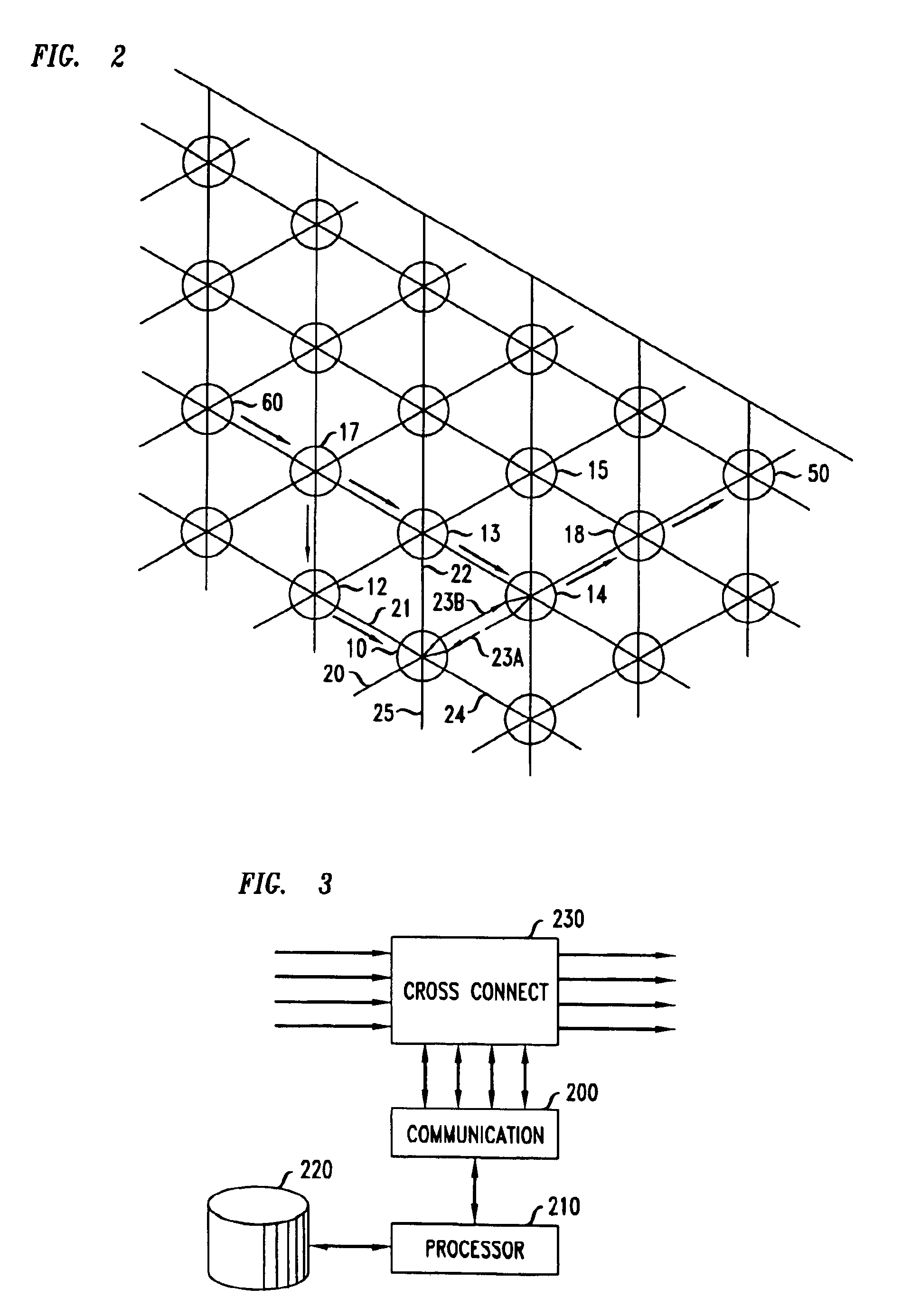Local information-based restoration arrangement
a technology of local information and restoration arrangement, applied in data switching networks, frequency-division multiplexes, instruments, etc., can solve the problems of slow network connection, slow network connection, and cable cut, and achieve the effect of reducing the cost of repair and maintenance, improving service life, and improving service li
- Summary
- Abstract
- Description
- Claims
- Application Information
AI Technical Summary
Benefits of technology
Problems solved by technology
Method used
Image
Examples
Embodiment Construction
[0011]A distributed control system potentially is faster; more efficient and more robust than a central control system. Therefore the failure restoration management system disclosed herein centers on the use of a distributed restoration management of local failure. In accordance with the principles disclosed herein, the concept of a neighborhood is employed, based on the fact that the most efficient restoration routes are highly likely to pass through a small collection of nodes within close topological proximity to the failure site. FIG. 1 presents a view of a network in which the principles disclosed herein may be applied. For ease of understanding, the depicted network is of a very simple and regular topology (hexagonal) but, of course, that is not a requirement of this invention.
[0012]To better understand the description that follows, it is useful to review some of the nomenclature employed herein.
[0013]In the context of this disclosure, a path corresponds to the route over whic...
PUM
 Login to View More
Login to View More Abstract
Description
Claims
Application Information
 Login to View More
Login to View More - R&D
- Intellectual Property
- Life Sciences
- Materials
- Tech Scout
- Unparalleled Data Quality
- Higher Quality Content
- 60% Fewer Hallucinations
Browse by: Latest US Patents, China's latest patents, Technical Efficacy Thesaurus, Application Domain, Technology Topic, Popular Technical Reports.
© 2025 PatSnap. All rights reserved.Legal|Privacy policy|Modern Slavery Act Transparency Statement|Sitemap|About US| Contact US: help@patsnap.com



